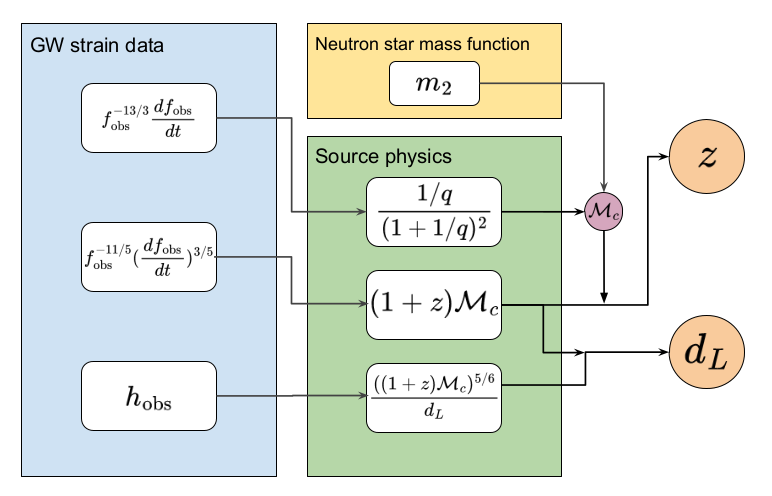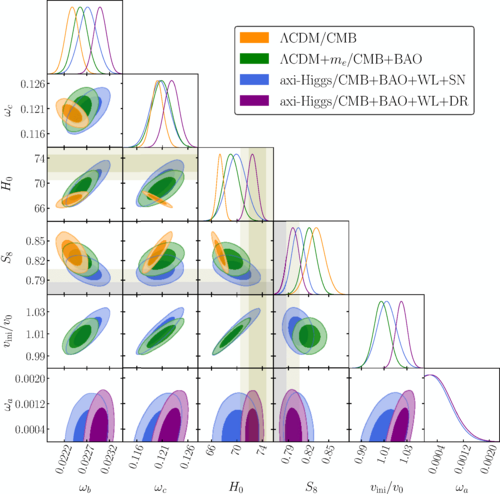Alternative calibration for standard candle type measurements: Gravitational Wave
Hubble tension is one of the most pronounced tensions - at a statistical significance as high as >5 sigma. One can attribute the mismatch between the CMB based measurement and the supernovae based measurement to the systematics of either (or both) measurement. It is therefore valuable to have alternative probes that rest on a separated set of required presumptions to interpret the data. This would allow for contrasting the incorrect presumption made in the existing measurements, therefore pinning down the root cause of Hubble tension.
With my collaborators, I proposed a method using gravitational wave radiation from neutron star-black hole mergers to measure the expansion in the late time universe. Just as any other standard candle-like methods (supernovae in particular), calibration to standardise the signal strength is one of the most important steps. We showed that it is possible to calibrate with the neutron star mass function empirically constrained by the pulsar-neutron star systems within the Milky Way. Some cautions need to be made in selecting the population of neutron stars for Hubble constant measurement - analogous to biassing towards type-Ia supernovae in traditional standard candle method.

